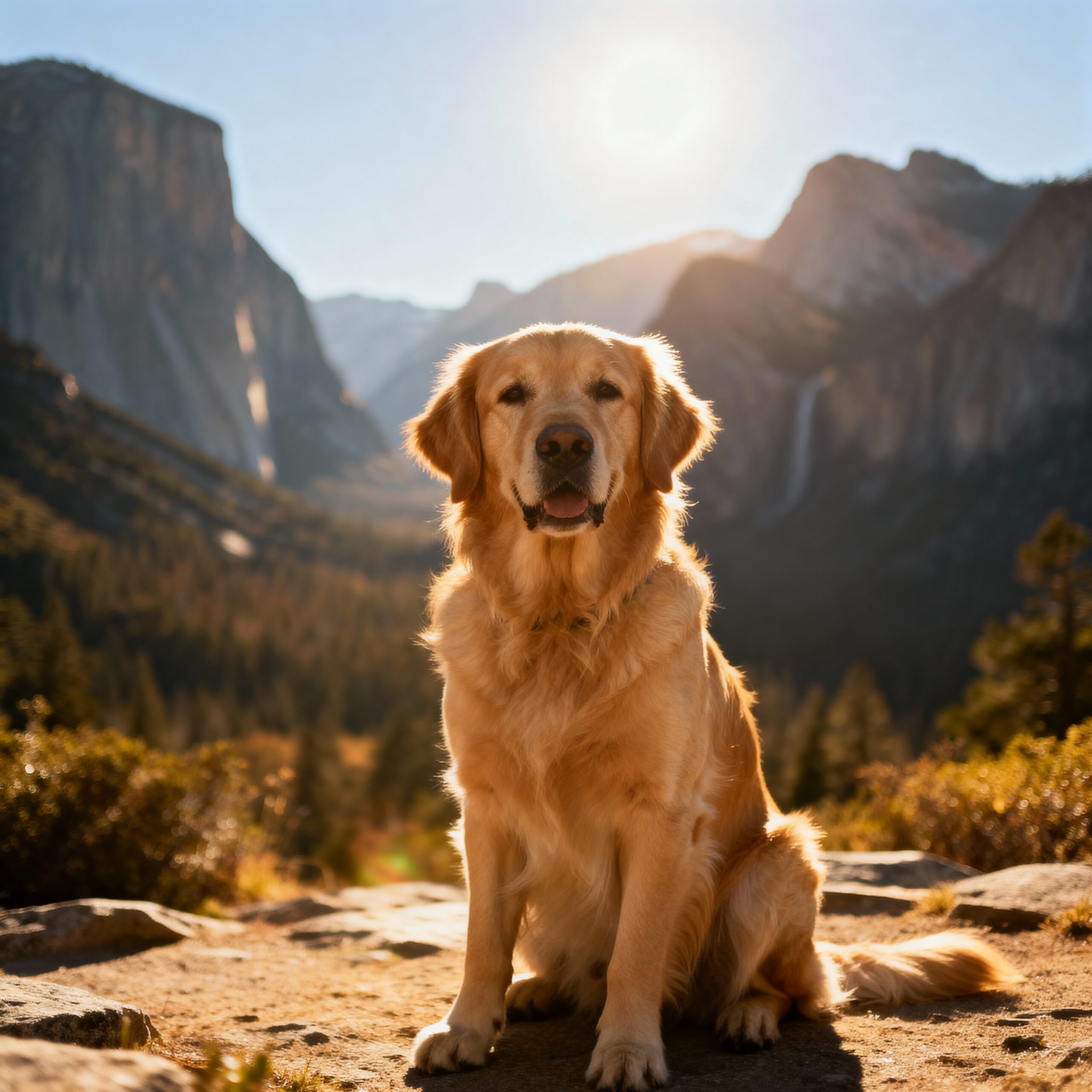2025 Why Are Pets Not Allowed in National Parks USA?
If you’re a pet parent who loves adventures, you might wonder, “Why are pets not allowed in US national parks?”
It’s a common question — and an important one.
While it might feel unfair, there are solid reasons behind this rule. National parks protect not only visitors but also delicate ecosystems, wildlife, and your furry friends themselves.
Let’s break it down in simple words and explore where pets can and cannot go — and why!
Why It’s Important to Understand These Rules
- Helps you plan safe, legal trips with your pet.
- Prevents accidental harm to wildlife and your dog.
- Keeps park ecosystems clean and balanced.
- Avoids fines and penalties for breaking pet regulations.
Remember, national parks are protected lands, and every rule helps preserve their natural beauty.
Why Pets Are Not Allowed in Many US National Parks
Here are the main reasons:
🦌 1. Wildlife Protection
Dogs carry scents that can stress or scare wild animals.
Even friendly barking can disturb species like deer, foxes, or nesting birds.
🌿 2. Environmental Safety
Pet waste introduces bacteria not natural to park environments.
This can pollute soil and water, harming plants and animals.
🚶♀️ 3. Trail & Habitat Damage
Dogs sometimes run off-trail, trampling plants or disrupting animal burrows.
🦠 4. Health Risks
Ticks, fleas, or diseases from domestic pets can spread to wildlife (and vice versa).
🏕️ 5. Visitor Experience
Not all visitors are comfortable around pets. Barking or chasing can disturb others who come for peace and nature.
Benefits of Following National Park Pet Rules
- Keeps wildlife safe from human influence.
- Protects your dog from wild predators or extreme weather.
- Ensures cleaner, healthier natural parks.
- Builds respect among pet owners and park rangers.
Step-by-Step Guide: What to Do If You Want to Visit National Parks with Your Dog
Step 1: Check Park Rules Online
Each park’s pet policy is listed on the official National Park Service (NPS.gov) website.
Step 2: Find Pet-Friendly Alternatives
Many national forests, recreation areas, and state parks are pet-friendly.
You can hike, camp, and explore safely there.
Step 3: Keep a Travel Checklist
- Leash (max 6 feet)
- Waste bags
- Water & collapsible bowl
- Dog boots for rocky trails
- Pet ID tag
Step 4: Follow On-Site Signs
Obey signs that mark “No Pets” zones — they exist for safety and conservation.
Step 5: Respect Wildlife & Fellow Visitors
Keep your dog close and calm to protect both animals and the park’s peace.
Motivational Quote 🐶
“Your pet’s best adventure is the one that keeps both nature and friendship safe.”
Are Pets Allowed in US National Parks?
Mostly yes — but only in certain areas.
Dogs are allowed in:
- Campgrounds
- Parking lots
- Paved roads and picnic zones
They are not allowed on:
- Backcountry trails
- Visitor centers
- Unpaved hiking paths
Each park has its own rules — so always check before your trip.
What Is Not Allowed in US National Parks?
Besides pets in some zones, these are also restricted:
- Feeding wildlife
- Littering
- Drones
- Loud music
- Picking plants or disturbing habitats
The goal is to keep parks natural and enjoyable for everyone.
Why Are Dogs Not Allowed in Yellowstone?
At Yellowstone National Park, dogs are only allowed in:
- Developed areas
- Campgrounds
- Parking lots
They are not permitted on hiking trails or in thermal zones, because:
- The ground is extremely hot and dangerous.
- Wildlife (like bears and bison) are unpredictable.
- Pets can easily get injured or lost.
Tip: Stay in pet-friendly towns nearby like West Yellowstone or Gardiner, where trails welcome dogs.
Are Dogs Allowed at Mount Rushmore?
Mount Rushmore allows dogs only in specific areas:
- Parking lots and walkways near the main entrance.
- Pet Exercise Area located near the parking garage.
However, pets are not allowed inside the memorial, visitor centers, or on the Avenue of Flags.
Still, you can enjoy scenic drives and nearby forests like Black Hills National Forest, which is more pet-friendly!
Pet-Friendly Alternatives Near National Parks
If you can’t take your dog inside a national park, don’t worry — here are great alternatives:
🐾 1. National Forests:
Most allow dogs on trails and campgrounds.
🐾 2. State Parks:
Often have more relaxed rules for leashed pets.
🐾 3. Recreation Areas:
Ideal for swimming, hiking, and outdoor fun.
Examples:
- Grand Canyon South Rim Trail (Pet Zone)
- Bryce Canyon National Park (Paved Rim Trail)
- Grand Teton National Park (Designated Pet Paths)
Conclusion
So, why are pets not allowed in national parks in the USA?
Because the parks are meant to protect wildlife, preserve nature, and keep everyone safe — including your pets!
By respecting these rules, you become a responsible pet owner and a true nature lover.
The next time you plan a trip, research pet-friendly alternatives and create beautiful adventures that keep nature happy, too. 🌿
FAQs
Q1: Are pets allowed in US national parks?
A: Yes, but only in developed areas like roads, parking lots, and campgrounds.
Q2: Why are dogs not allowed in Yellowstone?
A: Because of hot thermal ground, wildlife danger, and fragile habitats.
Q3: Are dogs allowed at Mount Rushmore?
A: Only in parking lots and specific pet areas, not inside the memorial.
Q4: What is not allowed in US national parks?
A: Drones, littering, loud music, feeding wildlife, and pets in restricted zones.
Q5: What’s the best alternative to visiting with pets?
A: Go to nearby national forests or recreation areas that are dog-friendly.

